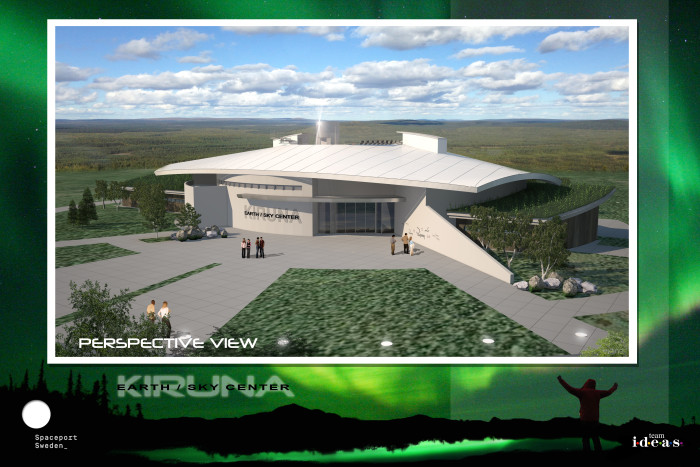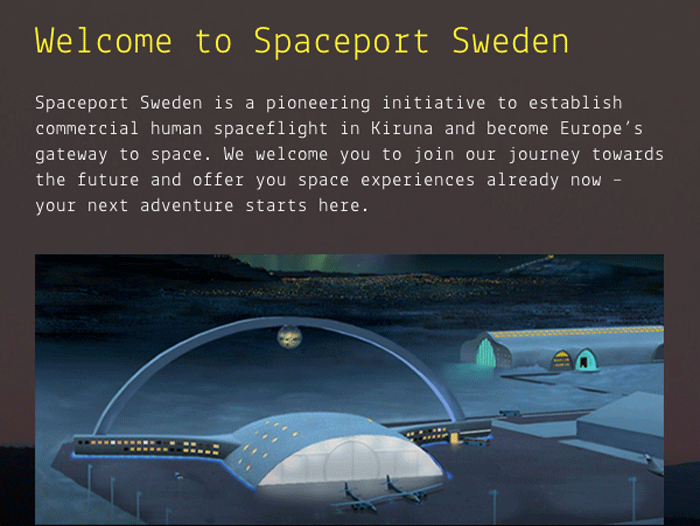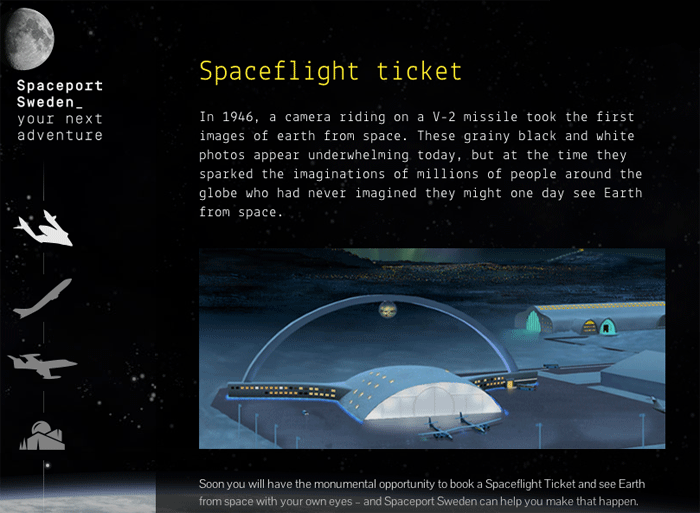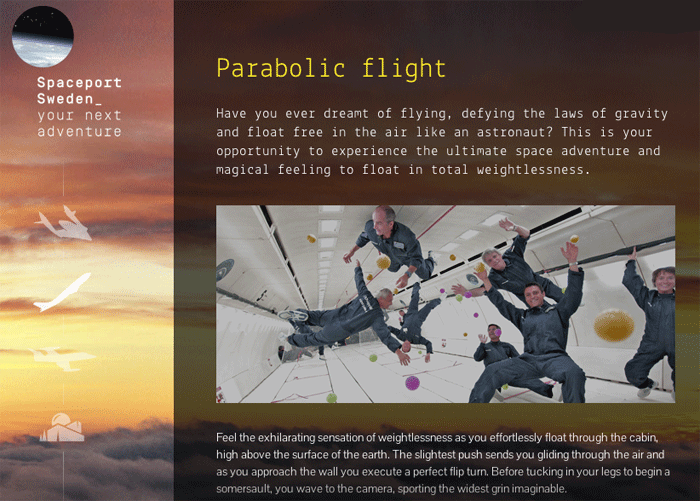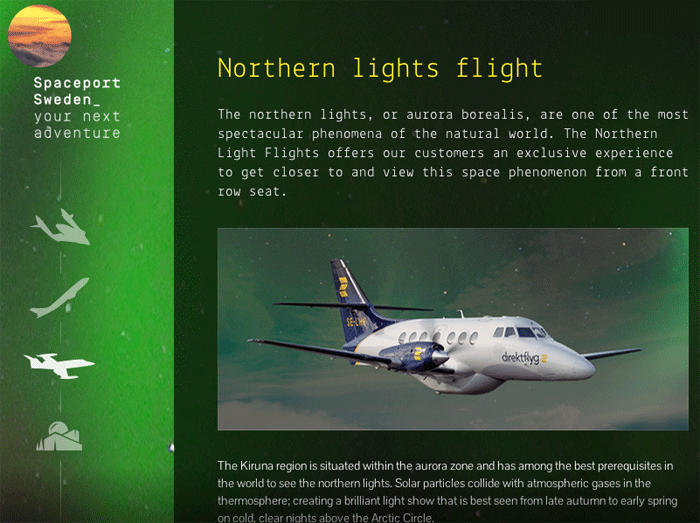.
29.07.2013
As celebrities count down to Virgin's first commercial galactic flight next year, Ian Burrell visits a rival space station in Lapland
.
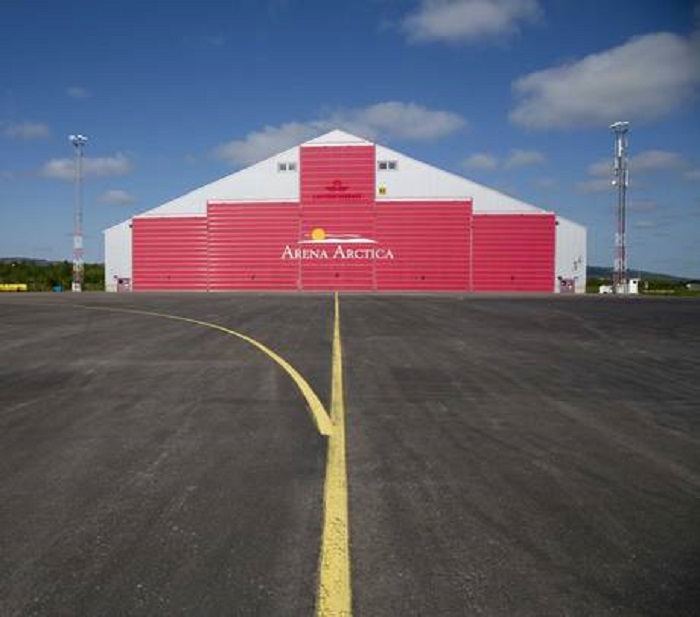
Neil Armstrong was supposed to have transformed our wanderlust. It was because of him that, as a small boy, I found myself dragging home my first prize of a giant blue suitcase after successfully impersonating the spaceman in the school fancy-dress competition with a clingfilm-fronted hairdryer box for a helmet and two washing-up liquid bottles for my oxygen supply.
The children who grew up in the aftermath of the original Moon Walk (as opposed to the later Michael Jackson sensation) bounced on their Space Hoppers, ate Mars Bars and Milky Ways, and if you'd asked them, "What do you want to be when you grow up?" they would likely cite "astronaut" among their career aspirations. But what has happened since? Really, not a lot – when you consider the excitement of 1969.
Nearly 44 years later and only 531 privileged human beings have made it into space (and only a dozen have landed on the moon).
It's not that we've lost interest in being astronauts. In our popular culture we have obsessed over the possibilities of space travel. In the late 20th century, we dreamed of going beyond Star Trek's final frontier or exploring the galaxy like Han Solo. And the advance of computer technology has indulged our extra-terrestrial urges in interactive games, from the pioneering Space Invaders to the Microsoft franchise Halo.
But the prospect of actually physically launching into orbit has never matched the expectations raised by those monochrome images of Armstrong and fellow astronaut Buzz Aldrin on their lunar expedition. Many remember how the Challenger blew up 73 seconds after lift-off in 1986, and that sense of an Icarus curse halting man's interplanetary adventures was reinforced by the sight of the space shuttle Columbia ending its 28th mission by falling apart as it fell back to Earth at 17,500 miles per hour in January 2003.
Yet suddenly belief in commercial space travel has returned. Virgin Galactic's SpaceShipTwo is set to be the first tourist craft in space, having successfully completed its first rocket-powered flight in April, as Sir Richard Branson looked up proudly from the Mojave desert. "We saw history in the making today," he said, predicting "a very realistic goal of full space flight by the year's end."
SpaceShipTwo's 580 passengers have each paid $200,000 for the privilege of travelling at 2,600 miles per hour and floating weightless at 68 miles above the Earth. The entertainer Sarah Brightman has a ticket but hopes to reach space even quicker, having also won a seat on a Russian Soyuz rocket that will take her 160 times around the earth in 10 days. Brightman was the singer of the 1978 hit "I Lost my Heart to a Starship Trooper" – finally the space dreams are coming true.
The Virgin voyage will take off from New Mexico in 2014, but future space tourists will also have the option of jetting off from a little-known place in Lapland. Visiting Kiruna, there is definitely something of the final frontier about this Swedish city, situated as it is at 67 degrees latitude, north of the Arctic Circle. For more than 100 years, this Lapland community has been associated with going down rather than up. The terraces of the vast Kiirunavaara mine dominate Kiruna like a medieval fortress. Its shafts descend 1,365 metres, making it the biggest underground iron ore mine in the world. This subterranean treasure chest is so destabilising the urban foundations that the whole city centre will have to be knocked down and relocated.
Despite all this, Kiruna is positioning itself as the city for space travel. When future waves of British astronauts lift off from Earth, they might do so not from the United States desert but from the land of the reindeer. "Our vision is to become Europe's foremost gateway to space," says Karin Nilsdotter, CEO of Spaceport Sweden.
The aim to become Europe's premier space hub is based on nearly 60 years of scientific expertise, much of it derived from studying the Northern Lights, or Aurora Borealis. Kiruna's isolated location is its great strength. The proximity to the Northern Lights inspired a Geophysical Observatory in 1957, a facility that has grown into a full-blown 'space campus' under the auspices of the Swedish Institute of Space Physics. The limited air traffic in Lapland, combined with the sparse population, makes it an ideal launchpad – the Swedish Space Corporation's Esrange Space Center was established in Kiruna in 1964 and has launched more than 400 rockets and 500 high-altitude balloons.
Spaceport Sweden already partners with the Institute to offer flights above the clouds to give close-up views of the Northern Lights in the company of scientific experts. It has built a relationship with Virgin Galactic and the cheaper but less advanced XCOR Lynx project. Nilsdotter believes Kiruna will be hosting commercial space travel within three to five years.
In the meantime, she is determined to build a wider space tourism industry in the town that will offer a breadth of experiences to please everyone from Star Trek enthusiasts to dedicated amateur astronomers and professional scientists.
The first stage of the plan is to create the Kiruna Science Center at the city's airport, including spaceflight preparation programmes for would-be astronauts. Spaceport is hoping to be able to provide parabolic flights that simulate weightlessness (the French space agency CNES this year opened such a facility in Bordeaux). A centrifuge which creates the effect of the g-force felt by space astronauts has been built by British firm QinetiQ at Linkoping. Deep and pitch-black caves at Bjorkliden are to be used to further physically test those planning a trip to space by forcing them to find their way in the cold and dark. "You need to be in physical shape and know how your body works. In space it's cold and you need to train for that," says Carina Johnsson, another member of the Spaceport project. In mid-summer when the sun never sets, Kiruna visitors can feel fairly spaced out without leaving terra firma. But those days of continual light are another competitive advantage for space programmes.
On the roof of the Institute of Space Physics, six kilometres out of town, Rick McGregor, the organisation's Research & Development Officer, looks out over the taiga landscape of pine forests towards the Esrange rocket launch site and the enormous toadstool of the EISCAT satellite dish, which is sending up signals 100 kilometres to collect data on the ionosphere. The Institute is one of the world's leading organisations for building space satellite instruments, and has sent them on missions to Venus, Mars and Saturn. It also helps facilitate the flights to see the Northern Lights. "A lot of the tourists are well-educated and interested. They don't just want to see the Aurora – they want to know more about it," says McGregor, a New Zealander and one of the many expatriates in Kiruna's space science community.
On this space campus, international students – including young women in saris and hijabs – are celebrating the end of their postgraduate Space Masters course. Among students from 25 countries is Frenchman Maxime Sixdeniers, aged 25, who talks excitedly about having set up an online 'space board' so Kiruna graduates can remain in touch as they go to work for space programmes around the world. Sixdeniers himself plans to stay on in Lapland. "When you are attracted by the space industry I think Kiruna is made for you," he says. He has ambitions to be an astronaut himself – but for research purposes. "I would rather be a scientist in space and do something useful than be a tourist in space."
Further down the education ladder, Malin Bruce, aged 18, moved to Kiruna from outside Stockholm two years ago to study at the Space High School. "I did a course on how the solar wind affected the magnetic atmosphere around Venus," she says. "We had people from Nasa come to our school last year and we recently went to see a rocket launch at Esrange – it was like a glowing needle going towards the sky." And then she adds earnestly: "But if you don't look after your planet and don't have resources to feed people then you won't have the resources to go to space".
Nilsdotter must overcome numerous obstacles if Kiruna is to be more than a collection of scientists and academics and if Europe's astronauts and space tourists are not to head for the Mojave, or Abu Dhabi or elsewhere. She must hope Sweden's historical relationship with the US in rocket research can help convince the Americans to refine regulations that currently classify spacecraft as weapons and ban them from operating abroad. She also needs business to recognise the value of investment in space.
Business futurists such as Saher Sidhom are convinced the emergence of commercial space travel can energise the economy. "Psychologically you hear the news about the recession and people lose their sense of optimism in what can be done," he says. "All the talk of space brings new dreams and inspiration for people to think beyond this ball of dirt, the Earth. When was the last time anybody got really excited about anything on a global scale, beyond the Olympics?"
Sidhom works at AMV BBDO, London's largest advertising agency, where he runs the Forge innovation division, which encourages specialists from different sectors to work together collaboratively. He was recently invited to Kiruna to help spread these ideas among Swedish scientists and business leaders at a TEDx conference organised by Nilsdotter. One of his messages was that data acquired in space travel exploration must be made widely available. "Everything we learn from space travel should be given free to the technologists and developers here on Earth so that they can be inspired by it," he said.
He showed them an innovative computer game he had helped develop, called Night Jar, which replicates the conditions of a space ship and requires users to navigate the vessel with only sound effects and the voice of Sherlock actor Benedict Cumberbatch to guide them. The hit iStore app was developed from an advertising campaign for Wrigley's chewing gum under the strapline 'Stimulate Your Senses'.
Back in England, another London advertising figure, Trevor Beattie, is planning to stimulate his own senses by going up in SpaceShipTwo's first flight. He is known for his long black curly hair, his Brummie accent and his creative work for clients such as Wonderbra ("Hello Boys!"), Yorkshire Tea and McCain's Oven Chips. His lifelong interest in space travel was reflected in an ad for Carling lager in which a group of astronaut lads on a night out in outer space are refused entry to a planet because one is wearing trainers, so they elect to go elsewhere. He is pleased that space is "the talk of the town" because it irks him that so many are "obsessed with cyberspace but not with outer space".
He signed up for the supersonic trip to sub orbit in 2005 and has already done the centrifuge testing to prepare him for coping with the powerful g-forces he will experience on the descent. "It was quite an eye-opener, or an eye-closer actually." Beattie has flown in the world's highest-flying plane, a MiG-25 Foxbat. He must also do his parabolic flight (colloquially known as the 'vomit comet') for simulating weightlessness.
But he's not scared. "Not in the slightest! If I announced to the world I was buying a motorbike tomorrow – that's a proper mid-life crisis. And if I started smoking on the back of a motorbike I would have real reason for people to be concerned about me."
Some people remain convinced he is going to the moon. "I've even had people asking 'Have you been?' As if no one noticed! As if I just went there but it didn't make the papers because Kim Kardashian wasn't on board."
Plenty of celebrities will be flying with Virgin Galactic – singer Justin Bieber is the latest to sign up. Beattie thinks rocket trips to 62 miles above the Earth is only the start. "I'm proud to say I've got to know Buzz Aldrin and he's designing engines that will take people to Mars," he says. "I was with him for his 83rd birthday at Claridge's in January and he went off and got on the plane to LA to meet his Hollywood friends and have a second celebration of his 83rd birthday. I mean, he's rock'n'roll!"
Neil Armstrong was a more private man than Buzz and died last year without seeing commercial space travel take off. But the notion of the Man on the Moon now seems close once again.
Whether it's from the United States or Lapland or another spaceport not so very far, far away, private individuals will be queuing up to leave the planet. Finally, for the public at large, the space suit is no longer just an item of fancy dress.
Quelle: The Independent
.
Update: 12.02.2014
.
Spaceport Sweden presents concept study to strengthen Kiruna, Swedish Lapland as a world leading space destination.
